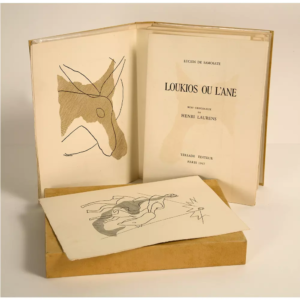Laurens, Henri
Henri Laurens, born in 1885 and died in 1954, was a French sculptor, painter, draughtsman and engraver. Initially close to Cubism, he moved away from it to develop a more organic style, depicting female nudes and scenes from ancient mythology. Read the biography
2 results displayedSortedfrom newest to oldest
Biography Henri Laurens (1885-1954)
In the early 1910s, Laurens was deeply influenced by Cubism, a revolutionary movement led by Georges Braque and Pablo Picasso. He adapted the principles of cubism to sculpture, experimenting with fragmented geometric forms and bold volumes. Unlike the cubist painters, he managed to infuse his works with a human warmth and sensual softness, balancing abstraction and lyricism.
His work evolved rapidly and, in the 1920s, Henri Laurens abandoned geometric rigidity to explore more fluid, organic forms. His sculptures, often inspired by the female figure and marine themes, express a harmony between full and empty, movement and stability. His most famous works, such as "La Baigneuse" and "La Musicienne", illustrate his talent for capturing the grace and vitality of the human body.
Alongside his work as a sculptor, Laurens also produced drawings, collages and engravings, demonstrating his versatility and innovative spirit. He collaborated with major artists and writers of his time, including André Breton and Paul Éluard, and took an active part in major European modern art exhibitions.
In the 1930s and 1940s, his work gained in maturity and serenity. He favors rounded forms, balanced compositions and an almost meditative simplicity. Despite the troubled times of the Second World War, Laurens continued to create, revealing in his works a quiet strength and poetic resilience.
Henri Laurens died in Paris on May 5, 1954, leaving behind him a considerable artistic legacy. Today, his sculptures are exhibited in the world's most prestigious museums, including the Centre Pompidou in Paris and the Museum of Modern Art (MoMA) in New York.
Visionary and profoundly human, Henri Laurens renewed modern sculpture by adding an architectural and emotional dimension. His work, at the crossroads of abstraction and lyricism, continues to inspire generations of artists and contemporary art enthusiasts.


